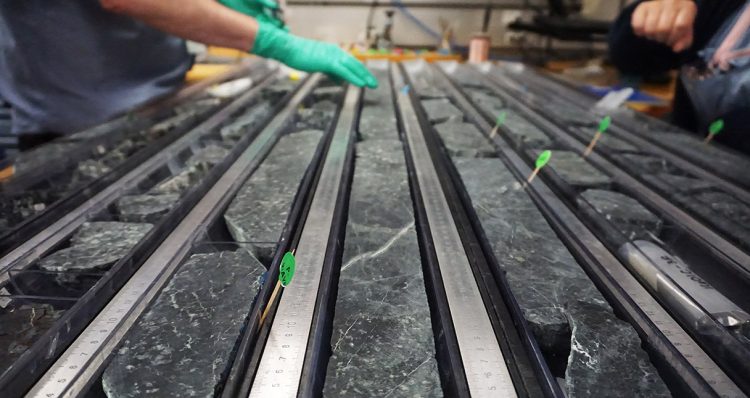
Historic Discovery of Earth’s Mantle Rocks: Unveiling Secrets of Geology, Volcanism, and Life’s Origins
Dubai | August 9, 2024 | 0 | Science & TechnologyIn a groundbreaking achievement, an international team of scientists has successfully recovered the first-ever continuous section of rocks from Earth’s mantle, the planet’s most extensive interior layer. This significant discovery, detailed in a study published on August 8, 2024, in the journal Science, offers unprecedented insights into the Earth’s geological history, volcanic activity, and potentially the origins of life itself.
A Historic Discovery from Earth’s Mantle
The mantle rocks, totaling an impressive 4,160 feet (1,268 meters) in length, were retrieved from a tectonic window along the Mid-Atlantic Ridge, a vast underwater mountain range that spans 10,000 miles from the Arctic to Africa. This tectonic window is a rare geological feature where mantle rocks are exposed on the seafloor, providing a unique opportunity to study materials that are typically hidden deep beneath the Earth’s crust.
The core was extracted during the Spring 2023 Expedition 399, titled “Building Blocks of Life, Atlantis Massif,” aboard the ocean drilling vessel JOIDES Resolution. Led by the International Ocean Discovery Program (IODP), this expedition marks a milestone in Earth sciences, allowing researchers to explore the composition, structure, and evolution of the planet’s mantle.
Unexpected Findings and Their Implications
The mantle rocks recovered during this expedition have revealed a surprising history of extensive melting, challenging the team’s initial expectations. Analysis showed a lower concentration of the mineral pyroxene and higher levels of magnesium, indicating that the mantle underwent more melting than previously thought. This melting process, occurring as the mantle ascended towards the Earth’s surface, is crucial for understanding how magma forms and leads to volcanic activity.
“We found channels within the mantle through which melt was transported, allowing us to trace the journey of magma from its origin to the Earth’s surface,” explained study co-author Johan Lissenberg, a geologist at Cardiff University. “This connection between mantle melting and volcanism is vital for comprehending the mechanisms that drive volcanic eruptions, particularly those on the ocean floor, which account for the majority of Earth’s volcanic activity.”
Insights into Early Earth and the Origins of Life
The study also highlights how these mantle rocks, which closely resemble those present on early Earth, interact with seawater to trigger chemical reactions that generate hydrogen and other life-sustaining molecules. This process could have been a key factor in the emergence of life on Earth, providing the necessary conditions for the earliest life forms to thrive.
“These rocks give us a glimpse into the chemical and physical environments of early Earth, offering critical clues about the origins of life,” said Susan Q. Lang, co-author and geologist at the Woods Hole Oceanographic Institution. “By studying these mantle rocks, we can better understand the conditions that may have fueled the development of life over geological time.”
The Future of Mantle Research
The expedition team continues to analyze the core, compiling a comprehensive inventory of the mantle rocks to further unravel the mysteries of Earth’s deep interior. As this research progresses, it promises to shed light on the complex processes that have shaped our planet’s evolution, providing new insights into everything from volcanic activity to the potential origins of life.
This historic discovery not only advances our understanding of Earth’s geology but also opens new avenues for exploring the planet’s past and its dynamic processes, contributing valuable knowledge to the field of Earth sciences.
